It’s my pleasure to welcome guest blogger Ingrid Fry, debut author of four new books, released in March. Over to you, Ingrid.
Don’t Let Time Steal Your Book
How the hell did you manage to write four, eighty-thousand-word books in the space of eighteen months, and, get them published?
As a published author, that’s the question I’m most often asked, and, often ask myself!
I thought a short blog on the topic would be helpful to anyone who feels they have a book inside them but are struggling with how to get started and keep going.
If you love to write, and plan to write a book one day, not having enough time is often the excuse we use to justify our inaction.
In these days of Corona Virus, all the ‘not having time’ memes indicate that lack of time is not the real reason behind why we don’t start all those things we want to do.
My four-book series would never have seen the light of day if I hadn’t ‘made time’ and set achievable goals. As Charles Buxton so rightly said, “You will never find time for anything. You must make it.”
I started a blog on my website to document my writing journey and road to publication. By doing so, I hoped to inspire, motivate and make it easier for other aspiring writers to achieve their dream. The blog didn’t get very far, because I soon realised, I had to narrow my focus if I wanted to achieve my dream of writing a book.
Tapping into something that motivates you and drives you forward on a daily basis is a crucial component to writing that book. You really do have to “start with the end in mind” and identify your “why”. Whatever your aspiration is, whether it’s achieving fitness goals, losing weight, learning the guitar; your “Why” has to be identified and kept in mind if you want to accomplish your dream.
Write down:
(1) all the reasons you want to achieve that goal
(2) all the ways your life will be better for achieving it
(3) how you will feel when you have succeeded, and most importantly
(4) how you will feel if you don’t achieve it.
It’s important to put this in writing, refer to it regularly and update it as new things come to mind.
Having daily achievable goals was the other key to my success. You can learn more about what that looks like from my blog post How to Get Started and Write That Book
Here’s a little about me and one of my motivating forces; my “Why”.
Mum and Dad were writers. Good ones too. Dad died at 87 and Mum at 93. They both lived extraordinary lives, the content of which would fill many books.
They both swore that one day they would write a book about their amazing adventures.
It never happened.
Time. Time and not enough of it was the excuse that stole their dreams.
I’ve always wanted to write stories like the ones I loved to read. I grew up on a diet of Sci-Fi, Horror, Fantasy and Metaphysics.
They were the books that fired my imagination, excited, enthralled and transported me to distant worlds.
I wanted to write a book. But like Mum and Dad, I kept putting it off. It seemed too huge a task. My life was littered with a trail of short stories, poems, illustrated children’s books, notebooks, ideas, creative journals, but ‘the book’ loomed like a mountain above me, impossible to climb.
The motivation – the “Why”– to take that first step came from my parents.
I didn’t want to lie on my deathbed with a precious dream unfulfilled.
So, I wrote that book.
And then another. And another. And another!
And I’m halfway through one more.
I’ve done it! I’ve written that book, and some. But I still have one regret.
Mum and Dad aren’t here to read them.
Is your soul aching to write a book?
Then don’t be like my parents or many other would be writers and get to the end of your journey filled with regrets.
Do it now. Your soul will sing.
‘There is no greater joy than expressing the song in your heart.’ ~ Ingrid Fry
Resources
Bird by Bird (Some Instructions on Writing and Life) by Anne Lamott
This book is a great place to start for guidance and inspiration, especially if the road ahead seems overwhelming.
Word by Word, an audio workshop by Anne Lamott
This audio workshop provides you with the opportunity to hear Anne in action. It is laugh out loud, poignant, informative and will provide you with the encouragement and ideas you need to get started and most importantly, keep going.
About the Crystal Sphere Series
Following an encounter with a mysterious crystal sphere, Maggie is 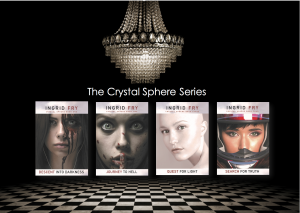 compelled to lead her partner Jason, an eclectic entourage of humans, and a telepathic beagle into battle against a dark force and a very nasty villain intent on destroying humanity.
compelled to lead her partner Jason, an eclectic entourage of humans, and a telepathic beagle into battle against a dark force and a very nasty villain intent on destroying humanity.
Maggie, the reluctant protagonist, is a psychic, computer programmer and corporate couch potato.
For her, things don’t get much more strenuous than walking the dog. Unfortunately, walking the dog is where it all begins, and now the fate of the world rests in her hands.
As a keyboard warrior and intuitive, Maggie feels ill equipped for the battle she has to fight. Music assists in keeping her sane, helping to muffle the psychic barrage that bombards her mind.
Each chapter in the series is linked to a tune that readers can follow via Maggie’s playlist on Spotify.
Set in current day Melbourne, Australia, this urban comic fantasy takes the reader on an action-packed journey across regional areas of Victoria and interstate. The story combines adventure and edge of your seat suspense, with a good dose of humour and a sprinkling of romance and spice.
Even readers who normally wouldn’t consider books with a slightly otherworldly element, have fallen in love with the story, describing it as “a sexy, funny, action packed story with characters you will fall in love with.”
Buy links:
Paperbacks
eBooks
Descent into Darkness
Journey to Hell
Quest for Light
Search for Truth
Limited Edition Box Sets
Maggie’s Playlist
Brief Bio:
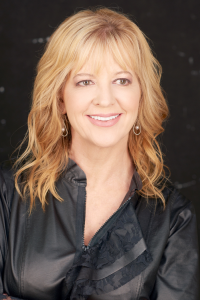 Ingrid was born and raised in Berkhamstead in the UK but spent much of her childhood commuting between England and Austria. Emigrating with her parents many years ago, she has called Australia home ever since.
Ingrid was born and raised in Berkhamstead in the UK but spent much of her childhood commuting between England and Austria. Emigrating with her parents many years ago, she has called Australia home ever since.
A writer, business development consultant and minder of a husband and a beagle with superpowers, she lives in a leafy suburb on the outskirts of Melbourne.
Lakes Entrance is her second home and it was from there, much of her first four novels were developed. In her spare time, she enjoys pistol shooting at the local gun club, dancing at The Caravan Music Club and as a passionate karate nerd, well on her way to a black belt in karate. Her fifth book in the series, Battle for Blood is due in 2021.
You can visit Ingrid’s website here. Ingrid is represented by Tale Publishing
 book that could only be written by someone with the unique causes and conditions of David Roland – a personal journey through suffering, a psychologist’s eye and the capacity to weave his own story and observations with the stories of others. For me, the reflections on the suffering of “moral injury” were especially pertinent, and David’s explorations of spirituality and suffering are nuanced, generous and encouraging. This book was launched as our world launched into the unprecedented changes of a global pandemic, and perhaps there has never been a time when a book about suffering has been more relevant?
book that could only be written by someone with the unique causes and conditions of David Roland – a personal journey through suffering, a psychologist’s eye and the capacity to weave his own story and observations with the stories of others. For me, the reflections on the suffering of “moral injury” were especially pertinent, and David’s explorations of spirituality and suffering are nuanced, generous and encouraging. This book was launched as our world launched into the unprecedented changes of a global pandemic, and perhaps there has never been a time when a book about suffering has been more relevant?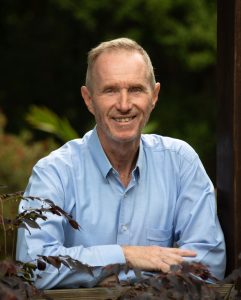 here: www.davidroland.com.au
here: www.davidroland.com.au
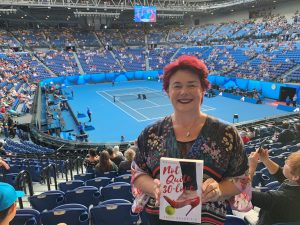
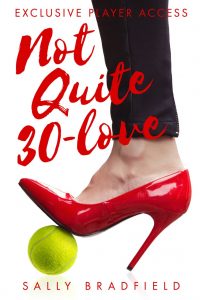
 compelled to lead her partner Jason, an eclectic entourage of humans, and a telepathic beagle into battle against a dark force and a very nasty villain intent on destroying humanity.
compelled to lead her partner Jason, an eclectic entourage of humans, and a telepathic beagle into battle against a dark force and a very nasty villain intent on destroying humanity. Ingrid was born and raised in Berkhamstead in the UK but spent much of her childhood commuting between England and Austria. Emigrating with her parents many years ago, she has called Australia home ever since.
Ingrid was born and raised in Berkhamstead in the UK but spent much of her childhood commuting between England and Austria. Emigrating with her parents many years ago, she has called Australia home ever since.
 Saunders who arrived in Coolgardie with the first gold rush and survived to tell the tale.
Saunders who arrived in Coolgardie with the first gold rush and survived to tell the tale. permission
permission release and my new YA novel,
release and my new YA novel, 